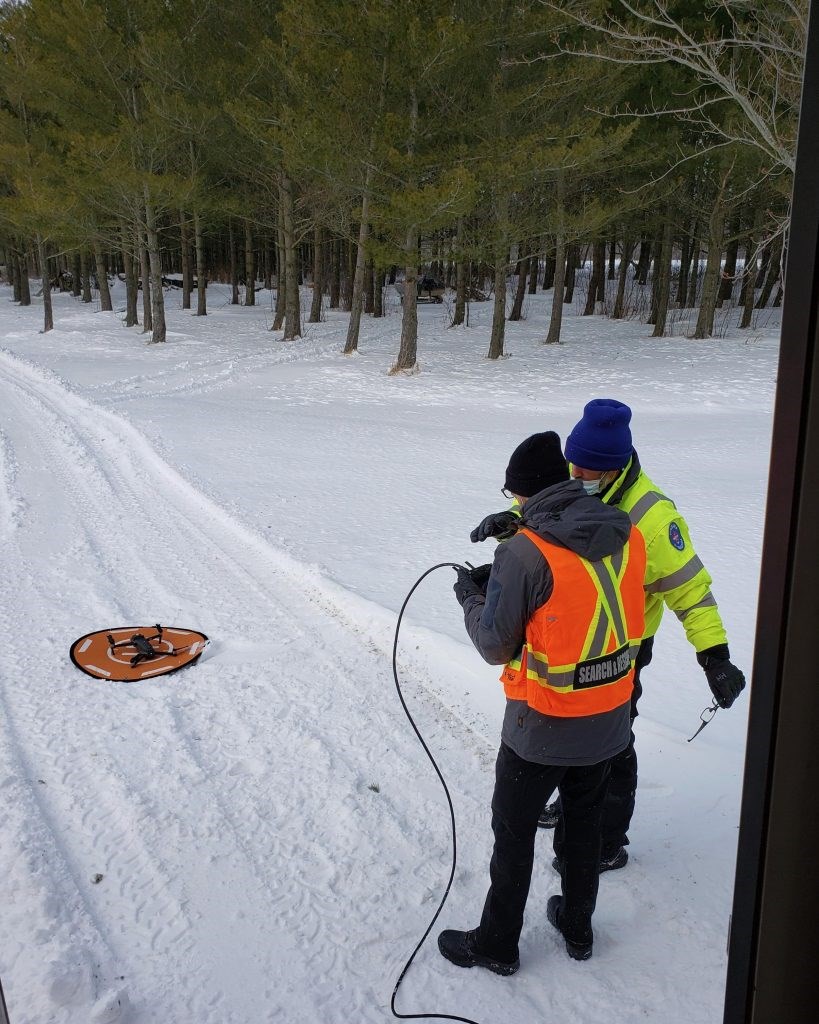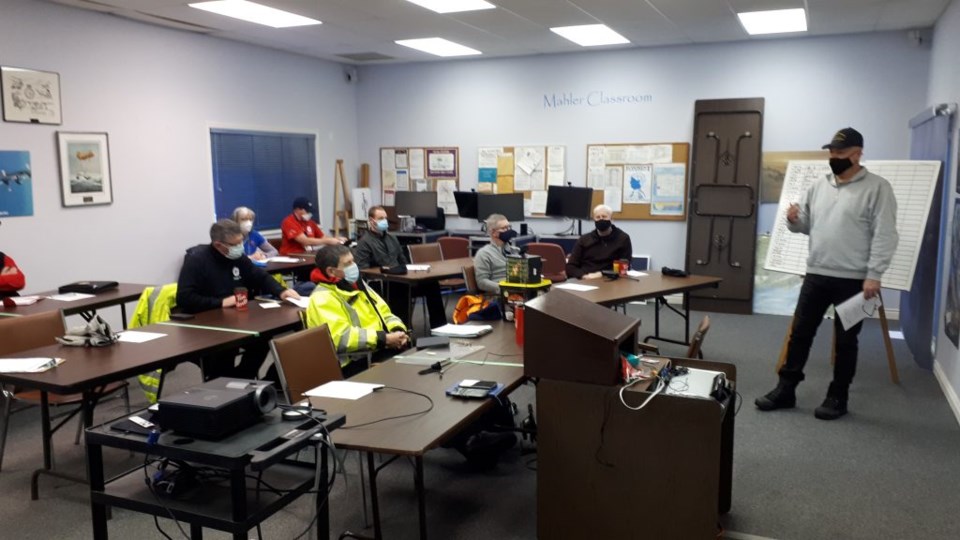
The local air search and rescue team has accomplished another first in their 45-year history as part of the national organization, training in the use of drones.
In 1982, members of CASARA Niagara (Civil Air Search and Rescue Association) were involved with Canadian Forces conducting tests of the satellite program for search and rescue operations used world-wide.
The Niagara organization was recently again at the forefront of search and rescue history by conducting exercises for Canadian Forces observers in the use of drones as a search vehicle in cold weather.
Major Claude Courcelles, the Canadian Forces national CASARA liaison officer, gave the morning briefing to combined air and ground crew of search and rescue members from Niagara and London. “You are making history today, by attempting to prove the capabilities of your skills with the added assistance of remotely piloted aircraft systems (drones) in order to locate a person in dense forest.”
Niagara member Gord Tessier has been at the forefront of drone use for search and rescue operations in Canada, as a drone pilot and instructor. In the past year he has been traveling across Ontario and Quebec instructing new search and rescue drone pilots.

“The skills are varied, in that not only do pilots fly, they also follow complex search patterns, all the while searching video monitors for the person or object they are searching for. While the pilot flies the drone, it’s really a team effort,” says Tessier. “The assignment comes from Canadian Forces Joint Rescue Coordination Centre, who relay information to a search coordinator, who guides a crew of three to five others who support the pilot. It’s all about teamwork, in order to successfully find a person in distress.”
Courcelles expressed appreciation to the local team for the advancement of drone technology being added to the capabilities of Canadian search and rescue operations. “It’s always about researching different technology that will best fit the demands of SAR, and the Canadian environment, which presents a wide variety of unique demands on equipment. What CASARA and the Canadian Forces have accomplished in the past year is develop standards to incorporate the use of drones in the National SAR system.”
The local team of volunteers is the first organization that includes the use of drones, says Courcelles.
In the past year Tessier has been called to fly his drone four times, searching for people missing in the waters of Lake Ontario and Lake Erie.
The recent exercise was originally planned to involve aircraft and ground crews from both Niagara and London organizations. Yet one of the most important skills for SAR is adaptability to changing situations. A morning snowfall in London prevented their aircraft from taking off. Meanwhile, the Niagara crew was ready to take off, when a sudden snow squall kept them on the ground. Without the aircraft to search for a simulated ultra-light pilot who had crashed, ground crews had to rely upon their own skills to do the searching. With temperatures in the minus 10 range, time was of the essence to find the cold, and likely, injured pilot.
Using electronic homing receivers, two separate ground crews worked together to narrow down the area of the search, whereupon two drone pilots launched their vehicles to search a wooded area. Tessier was joined by recently certified advanced drone pilot, coordinating their search areas while other crew members divided their responsibilities, providing visual support of the drone, and observation of video monitors of the drone’s cameras. Shortly after launching, the stranded pilot was located, and a ground team was able to quickly provide aid.
Courcelles said the next stage for testing drone operations will be conducted in the mountains of British Columbia, with anticipation of the technology being operational across Canada by May of this year. “It’s the latest technology being used to filter the data produced by drones to detect persons in distress faster,” he added.
As a non-profit registered charity, CASARA volunteer teams in London and Niagara depend on donations for equipment and operations. For more information, see the website for Niagara at www.caresniagara.ca, or for London at https://casaralondon.ca.